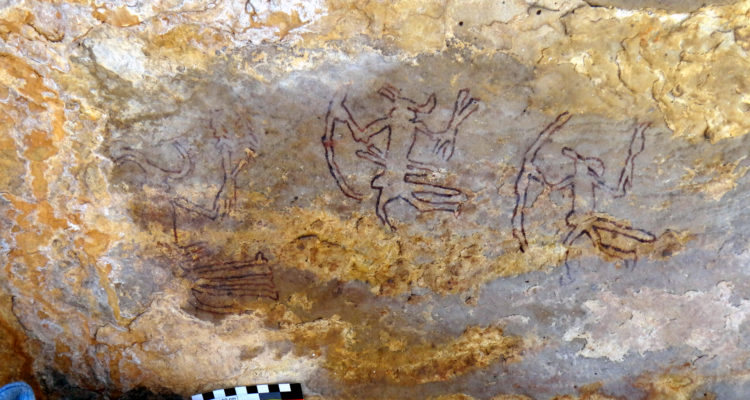Rock art is a global phenomenon. It forms the earliest survived exograms, the creative manifestations of the hominins stored outside the brain on the bare surface of rocks in the open, in the caves and rock shelters. Hence rock art is an important source for understanding the cognitive and cultural development of the hominins right from the Early/Middle Pleistocene period till present.
The scientific study of rock art and its conservation and protection for posterity needs the combined efforts of geologists, physicists, geochemists, technologists, archaeologists, conservationist, heritage managers, cinematographers, artists, etc in the spirit of understanding the cognitive and intellectual world of the past and present societies, and ultimately perhaps in determining how our species acquired its very concepts of reality. It is also inspires and motivates young generation for adventure and creativity and to inculcate the highest human values in them. However, claiming the legacy of our forgotten past calls for dedication and patience and above all our deep concern for our valuable rock art heritage as there is no substitute for such archaic practices. Rock Art Society of India and its founding Secretary General and Editor, Prof Giriraj Kumar are devoted to meet this challenge and achieve the goal.
India is one of the three countries having the richest treasures of rock art in the world (Fig. 1). The other two are Australia and South Africa. Brazil, Saudi Arabia and China are also coming up. In India we have the world famous rock art site complex Bhimbetka near Bhopal in central India, discovered by Dr V. S. Wakankar in 1957. It was inscribed by UNESCO in the list of World Heritage Sites in 2003. Besides, Chaturbhujnath nala in Chambal valley is the longest rock art gallery in the world, and Daraki-Chattan Cave in Chambal basin is the richest Palaeolithic cupule site in the world. Indeed, some of the most spectacular and globally most important rock art is in India. These caves and all such sites serve as the monuments that embody a common design and spirit for our cognitive and cultural development during the history of mankind.
These examples and the large corpus of rock art in all parts of the country make India a compelling case for its visit and scientific study and conservation of its rock art heritage.
However, Rock Art Science has so far been the preserve of a few Western countries, like France and Australia. Recently a global rock art dating facility has been established in the Hebei Normal University in the Hebei Province in China in June 2015. It is called as the International Centre for Rock Art Dating and Conservation (ICRAD). India is another growing economy with a very large body of rock art and it needs to join this international drive for scientific excellence in the study of this important cultural heritage asset. Besides dating, there are many other scientific aspects to be covered, including rock art conservation, site management and tourism, the advanced recording and study of rock art, the technology of rock art production, and the forensic science of rock art.


Leave a Reply